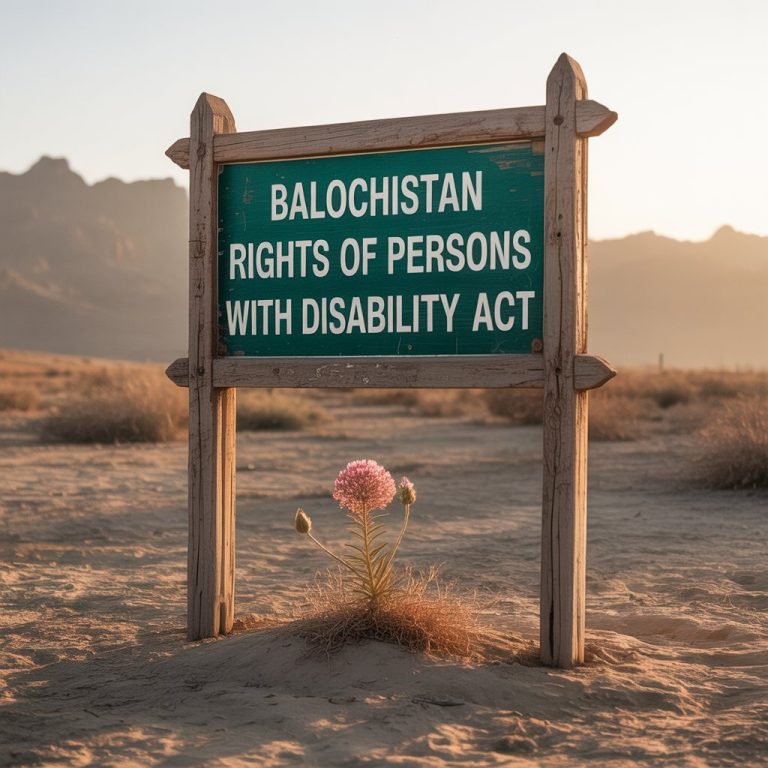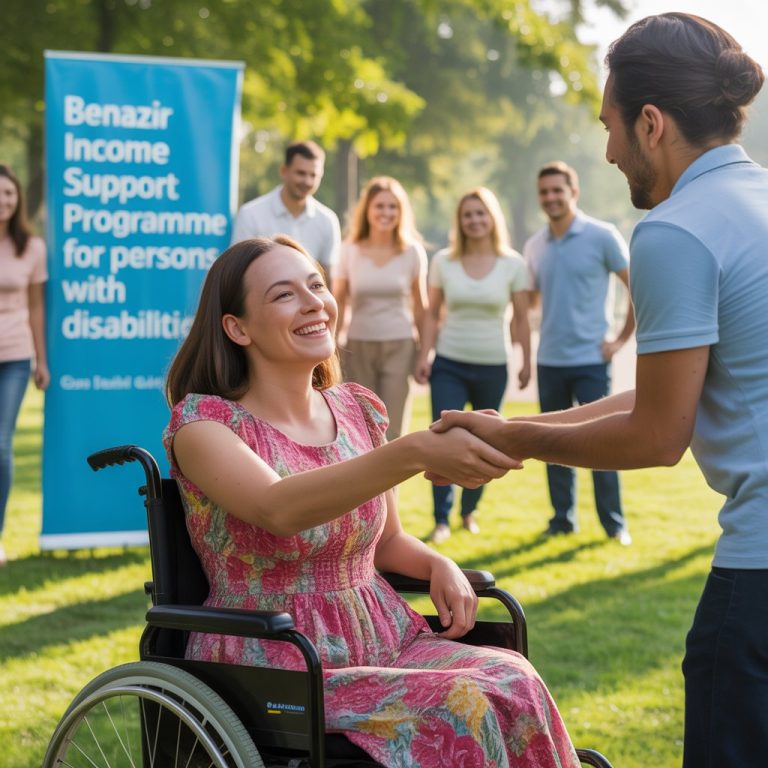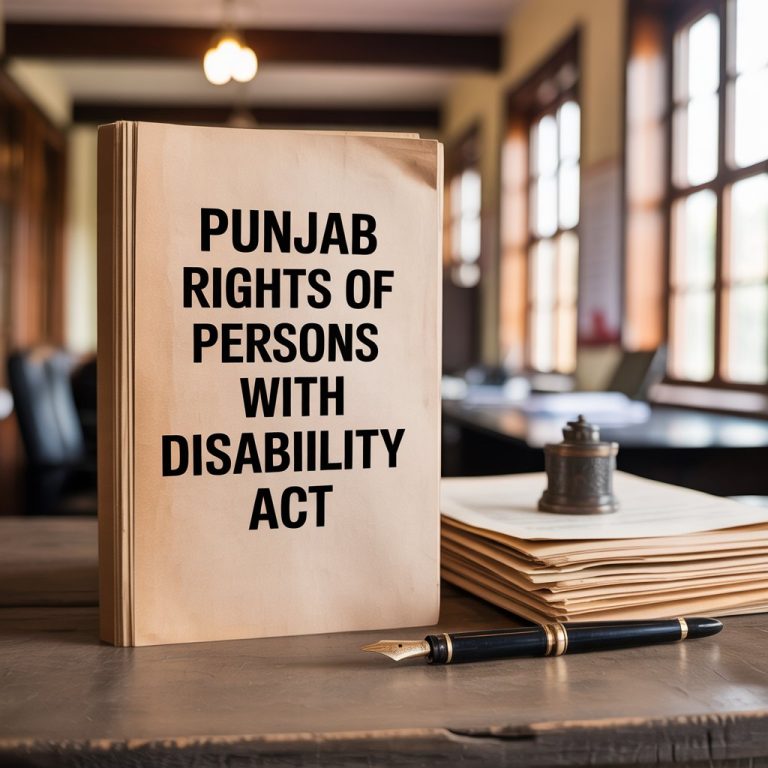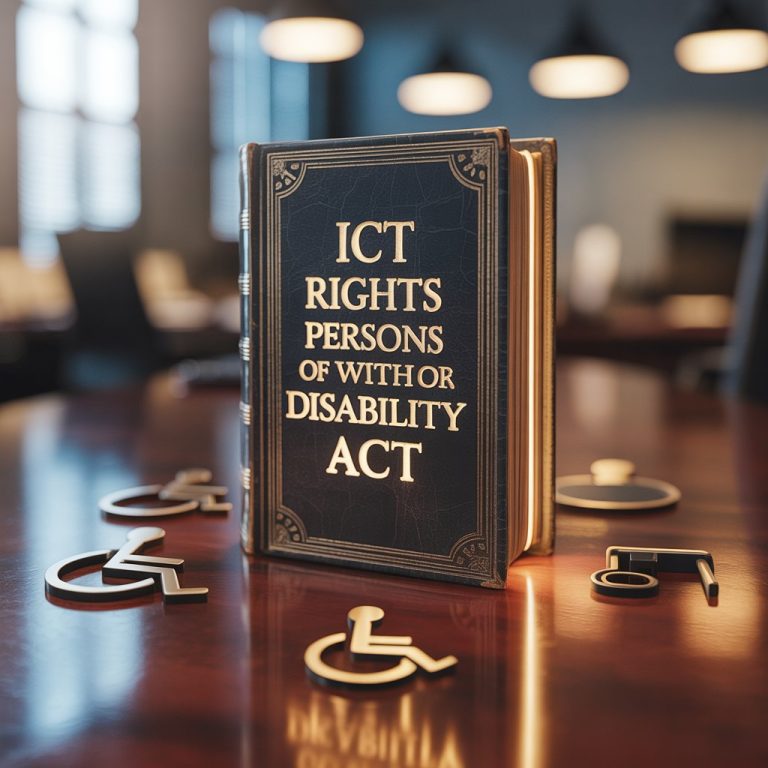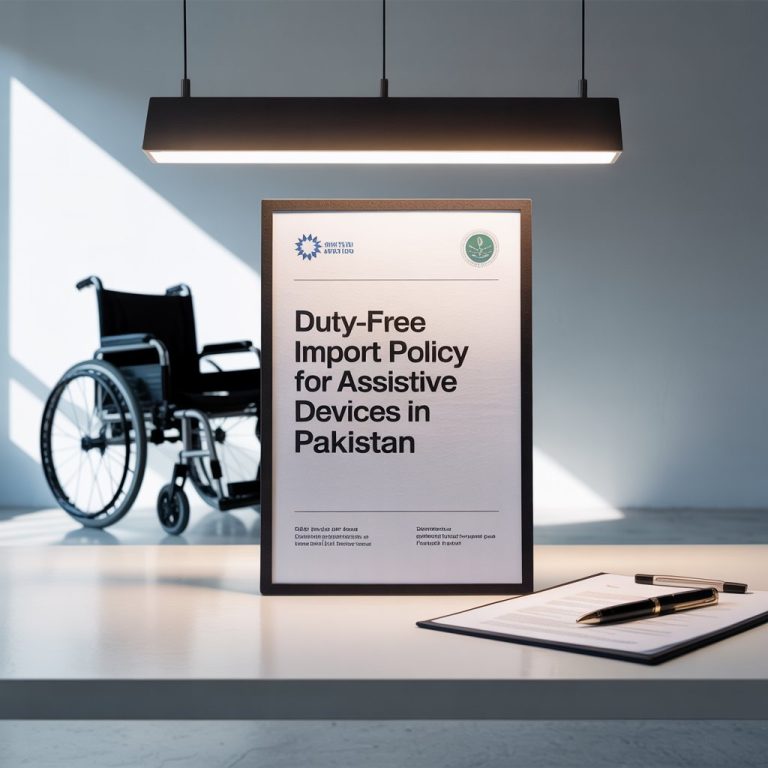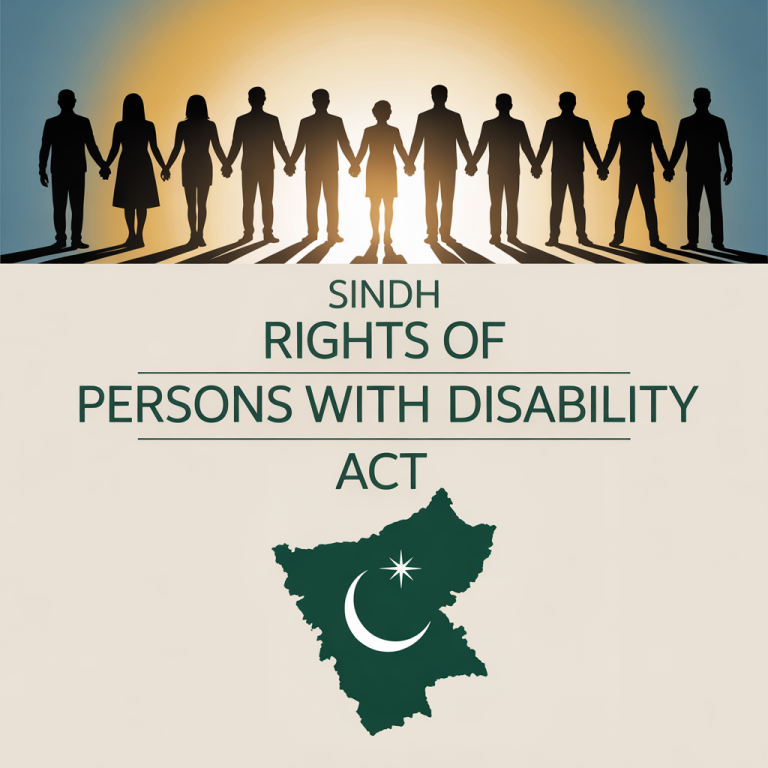ICT & Transport Policies for Persons with Disabilities in Pakistan
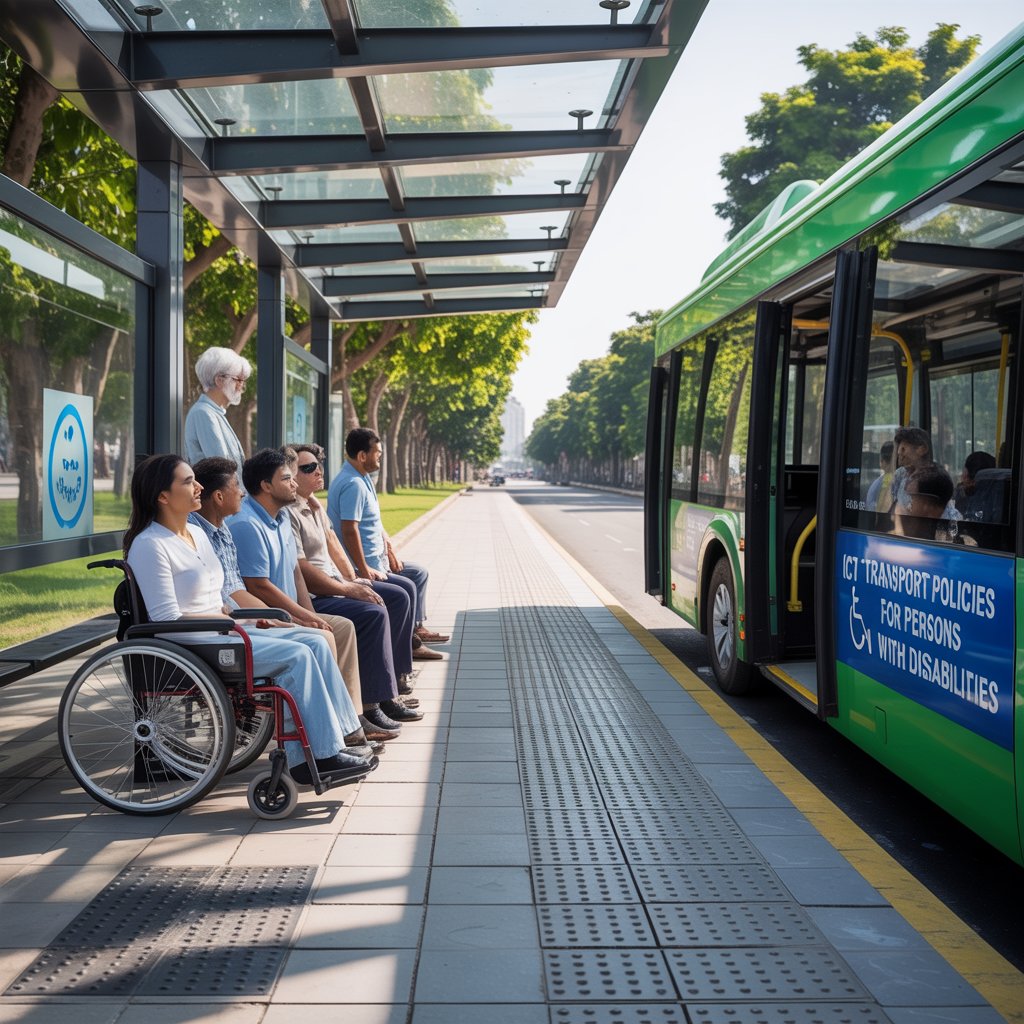
The intersection of technology and mobility defines our modern lives. But for persons with disabilities (PWDs) in Pakistan, access to ICT and transportation remains a battleground for basic rights. From screen readers to wheelchair ramps, progress is real—but far from complete. The government, private sector, and civil society are increasingly working to bridge this inclusion gap, inspired by commitments under the UN Convention on the Rights of Persons with Disabilities (UNCRPD) and Pakistan’s own national policy frameworks.
Introduction to Accessibility Rights in Pakistan
Pakistan ratified the UNCRPD in 2011, committing to eliminate barriers and ensure equal access to digital and physical infrastructure. Both Article 9 (Accessibility) and Article 20 (Personal Mobility) of the Convention emphasize the importance of accessible ICT and transportation. National policies and local reforms must reflect these obligations.
The Role of ICT in Empowering Persons with Disabilities
Information and Communication Technologies (ICT) unlock possibilities—from education and employment to healthcare and social interaction. For PWDs, accessible tech can mean independence, participation, and empowerment.
ICT Accessibility in Pakistan: Current Status
Though still evolving, Pakistan has initiated digital accessibility reforms:
- E-governance portals (NADRA, BISP, FBR) increasingly support screen readers.
- Some government websites offer language toggles, keyboard navigation, and audio support.
- Ministry of IT & Telecom has recognized digital inclusion as a policy priority.
However, few sites meet global accessibility standards like WCAG 2.1.
Assistive Technologies in Pakistan
Locally available assistive technologies include:
- Screen readers: NVDA, JAWS (limited Urdu support)
- Speech-to-text tools: Often underutilized due to low voice recognition in local dialects
- AAC Devices: Rare, but NGOs like Pakistan Association of the Deaf offer custom tools
Challenges include affordability, language localization, and low awareness.
Accessible Government Websites and Digital Services
Positive strides include:
- FBR Tax Portal: Offers text-to-speech tools
- NADRA E-Sahulat: Facilitates PWD CNIC renewals digitally
- Higher Education Commission (HEC): Some portals support screen magnifiers
Yet, most digital services fall short on inclusive UX/UI design.
Mobile Accessibility and Telecom Sector Inclusion
Telecom companies such as Jazz, Ufone, and Telenor provide:
- Special call/SMS packages for hearing-impaired users
- IVR systems with multi-language support
- SMS-based helplines for PWDs
These efforts are encouraging, but rural coverage and affordability remain concerns.
ICT Accessibility Standards and Guidelines
The Pakistan Telecommunication Authority (PTA) has proposed integrating WCAG 2.0 into national frameworks. However, adoption remains voluntary and fragmented.
Challenges to ICT Accessibility Implementation
- Cost: Assistive hardware/software is expensive and often imported.
- Language Barriers: Most tools are English-based, limiting Urdu speakers.
- Awareness: Low among developers and policymakers.
- Lack of Legal Mandates: No enforced law requiring accessible websites or apps.
Success Stories: Digital Inclusion in Practice
Example: A visually impaired student from Islamabad accessed higher education entirely through a screen reader and online tutorials. NGOs like Milestone are providing digital literacy training to hundreds of PWDs through smartphones and laptops.
The Right to Accessible Transportation
Accessibility to transport is not charity—it’s a right. Article 13 of the Constitution of Pakistan guarantees freedom of movement, which applies equally to PWDs.
Transport Concessions in Pakistan for Persons with Disabilities
CNIC-holding PWDs are eligible for reduced or free transportation on public systems, including:
- Pakistan Railways: 50% discount on all routes
- Metro Bus (Lahore, Islamabad, Multan): 100% fare waiver upon CNIC verification
- PIA and inter-city bus services: Some offer reduced fares, though inconsistently
These require valid disability CNICs, which are issued after medical verification by NADRA.
Pakistan Railways: Disability Inclusion Efforts
The national carrier provides:
- Reserved seating for PWDs
- Discounted tickets
- Plans for accessible platforms (though implementation is patchy)
Challenges include lack of staff training and poor infrastructure at smaller stations.
Metro Bus Systems (Lahore, Islamabad, Multan)
These modern systems offer:
- Wheelchair ramps and elevators
- Audio-visual announcements
- Fare-free access via special cards
However, elevator maintenance and lack of tactile guidance remain issues.
Accessible Ticketing and Navigation Systems
- E-ticketing apps lack voice guidance or large-text modes
- Audio announcements on buses are often inoperative
- Signage lacks braille or tactile maps
These features must be integrated to support independent navigation.
Local Public Transport Challenges
- Rickshaws and minibuses rarely cater to wheelchair users.
- Private ride-hailing services like Careem or InDrive offer no guarantees for accessibility.
- Women with disabilities face additional safety risks in these modes.
Policy Gaps in Transport Accessibility
Despite policies, enforcement is weak:
- No nationwide accessibility standard for transport
- Lack of inclusion in urban planning laws
- Disability rights laws often overlook rural mobility needs
Urban Planning and Inclusive Mobility
Smart city frameworks in Lahore and Islamabad should adopt Universal Design Principles, ensuring:
- Seamless mobility
- Accessible signage
- Transport stations with inclusive architecture
The Impact of Inclusive Transport on Daily Life
Accessible transport:
- Increases school and job attendance
- Reduces dependency on caregivers
- Enhances mental well-being through greater autonomy
Role of the Ministry of IT & Ministry of Transport
While the Ministry of IT focuses on digital inclusion, coordinated efforts with the Ministry of Transport are lacking. Joint task forces and cross-sector funding can strengthen outcomes.
Intersections with SDG Goals 9, 11 & 17
- Goal 9 (Industry & Infrastructure): Smart technologies for inclusion
- Goal 11 (Sustainable Cities): Safe, accessible transport for all
- Goal 17 (Partnerships): International support, multi-stakeholder coalitions
Women with Disabilities and Mobility Constraints
Women face double discrimination due to:
- Gender-based violence risks
- Lack of women-only accessible transport
- Social restrictions limiting public movement
Empowered mobility is central to gender equality.
Youth and Digital Skills for Independence
Youth-focused initiatives include:
- NAVTTC’s digital upskilling for PWDs
- Step Smart Assistive Tech Programs
- Online platforms like Rozgar.pk for freelancing
These foster digital confidence and job readiness.
Technological Innovations Driving Accessibility
Startups and developers are working on:
- AI-powered speech readers in Urdu
- GPS-linked accessible route planners
- Mobile apps for public transport schedules with real-time disability assistance
Civil Society & NGO Contributions to Accessibility
Groups like:
- NOWPDP
- Milestone
- STEP Pakistan
offer training, lobby for policy change, and distribute assistive devices. Their role is indispensable.
International Best Practices and Lessons for Pakistan
- India: Digital India program includes screen readers in multiple local languages
- UK: All government websites legally required to meet WCAG 2.1
- USA: ADA mandates accessible public transport and tech procurement
Pakistan can adapt these models within its cultural context.
Recommendations for Enhancing ICT Accessibility
- Enforce mandatory WCAG compliance for all government websites.
- Localize assistive tools in Urdu and regional languages.
- Offer subsidies for screen readers and devices.
- Train web developers in inclusive design.
Recommendations for Improving Transport Concessions
- Integrate disability verification directly with CNIC smartcards.
- Make accessible transport part of provincial transport policies.
- Mandate inclusive design in future transit tenders.
- Monitor implementation via independent access audits.
Monitoring and Evaluation Mechanisms
- PTA and MOTC must set benchmarks and KPIs.
- Include PWD representation in M&E committees.
- Conduct annual accessibility scorecards for government and transport portals.
Public Awareness Campaigns for Inclusive Access
- Run TV and social media campaigns showing benefits of accessible tech and mobility.
- Recognize employers and developers promoting digital inclusion.
- Launch annual Accessibility Innovation Challenge for youth.
Conclusion: Building an Inclusive Digital and Transport Infrastructure
Inclusive ICT and transport systems are not a luxury—they’re a right and necessity. Pakistan must move from policy intent to policy action, ensuring that every person, regardless of ability, can move freely and access information without barriers. The vision is clear. What’s needed now is sustained political will, innovative solutions, and collaborative partnerships.
FAQs
Are persons with disabilities entitled to free transport in Pakistan?
Yes, on Metro buses and Pakistan Railways, PWDs with disability CNICs receive reduced or free fares.
Which websites in Pakistan are accessible to PWDs?
NADRA and FBR websites have basic screen reader support, but full WCAG compliance is rare.
How can a PWD apply for a transport concession?
They must hold a verified Disability CNIC issued by NADRA and apply through transport authorities.
Is assistive technology available locally?
Yes, but it’s limited and often expensive. NGOs provide some free or subsidized options.
Which telecoms support digital inclusion?
Jazz, Ufone, and Telenor offer special call/SMS bundles and IVR systems for PWDs.
What is WCAG?
Web Content Accessibility Guidelines—a global standard for making websites accessible to everyone, including persons with disabilities.
